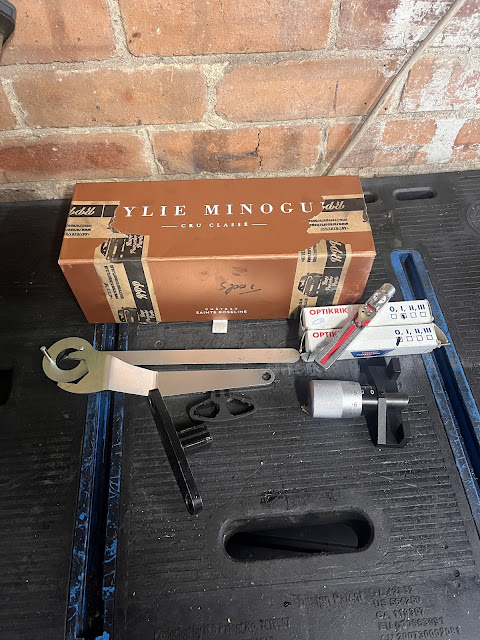Engine Front Seals & Belts
There are many seals on the front of the 944, and it seemed like most of them were leaking. Design911 sells a kit for all the seals; however, the crankshaft-toothed seal will also need changing as it wears and pushes oil out onto the belts.
The parts you need to replace all the leaking parts are below:
Left Balance Shaft
- 999 113 282 40 Shaft sealing ring
- 928 105 139 02 Spacer sleeve
- 944 105 321 00 Gasket/small O-ring
- 999 701 652 40 Large O-ring
Right Balance Shaft
- 999 113 281 40 Shaft sealing ring
- 928 105 139 02 Spacer sleeve - bought
- 944 105 321 00 Gasket/ small O-ring
- 999 701 652 40 Large O-ring
Crank Seal
- 999 707 283 40 Round seal
- 944 107 161 04 Toothed sleeve
- 999 113 331 40 Shaft sealing ring
Removing the required parts is a "long thing, " so it is worth watching a few videos to learn how to remove everything from the car. Before you start, you will need a flywheel locking tool to lock the engine TDC. You will also need a special belt tensioner spanner and another tool to remove the balance shaft pulleys. I also got a camshaft locking tool, which did not fit and was not worth the effort to get it to fit in the end, as the camshaft pulley does not really move, so it does not need locking in place. To measure the belt tension, you will need some Optibelt - OptiKrik tools, 0 & 1 are needed.
I got the job lot from eBay, from Rare Porsche Parts (RRP) who probably got them from some other idiot who did the work and decided to sell the car to guarantee he would never have to do it again, as it is a proper crap job 😡
Below are all the seals and sleeves. In my case, the worn sleeves and the o-rings for the balance shaft casings are causing the oil leaks. You can see the scoring on the crank sleeve with the oil pump gears on below:
- On the front plate of the spring tensioner, there are three fasteners. One holds the roller in the tensioner. The other two are used to tension the belt. To tension the belt, simply loosen the lock nut on the pivot arm (top fastener) and the locking bolt (lower).
- Using a pry bar or balance shaft pin spanner, you may want to gently nudge the tensioner in the release direction (i.e., more tension on the belt). Sometimes, the spring tensioners like to stick after sitting for a while. Once you're satisfied that the tensioner has been released, tighten the
- tensioner lock nut/bolt.
- It is worth noting that the idler for the timing belt and the metal guild rail need to be removed to measure the belts' tension.
- New belt - 4.0 ±0.3
- Used belt - 2.7 ±0.3
- Optibelt Tool - 40 lbs
- Old style belt (15 mm wide) - 2.7 ± 0.5
- New style belt (18 mm wide) - 3.5 ± 0.5
- Optibelt Tool - 28 lbs (20 lbs is the reading to aim for here; see comparison with Porsche Tool below)
- Optibelt Tool - 40 lbs- Timing Belt
- Optibelt Tool - 28 lbs - Balance shaft belt
- Optibelt: 110 lbs - Alternator belt, across the TOP span of the belt (between crank and alternator)
- Optibelt: 70 lbs - Power steering belt - across the bottom span












